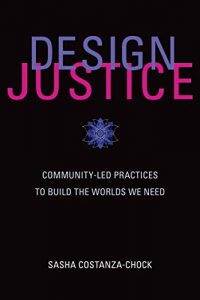Reading, as Self-Care, Includes the “Deep Stuff” Too
Last week, we introduced you to the concept of reading as self care. Sure, typical “beach reads” allow us the opportunities to participate in escapism…plummeting us through alternate universes, engaging us in new characters that we would perhaps never meet in real life. However, not all self-care through reading requires the quick “throwaway” reads typical on summer reading lists. Books of all kinds, especially those that engage our curiosity and help us imagine a world where we challenge the status quo, engage our brains through new learning and the excitement of new opportunities, taking our intellectual minds on flights of fancy, asking us to reimagine our current world circumstances.
We’re only a short time away from the Labor Day weekend, marking the official end of summer and for many, a dread is settling in. Why not try to quell the unsettled feelings by engaging and recharging through reading the deep stuff? Did you know that a 2009 study found that reading (even if only for six minutes a day) can decrease our heart rate, improve our breathing and reduce our stress levels by 68 percent? Now is the time to engage in reading as the ultimate act of self-care that it is. After all, it only requires six minutes a day!
This week’s recommendation focuses on engaging your growth through a Culture & Climate focus. Join us next week for the final recommendation off of our summer reading list when we focus on Structures & Systems.
Want to engage through growth in CULTURE & CLIMATE?
 SUGGESTED READ: Design Justice: Community-Led Practices to Build the Worlds We Need by Sasha Costanza-Chock, The MIT Press: 2020, 338 pages.
SUGGESTED READ: Design Justice: Community-Led Practices to Build the Worlds We Need by Sasha Costanza-Chock, The MIT Press: 2020, 338 pages.
WHY IT ENGAGES US: We thrive through our work helping organizations place deliberate action over good intentions, as they assess and act to end the perpetuation of injustice and inequalities. This book details an approach to assessment, planning, implementation, and improvement centered in the intersection of design, power, and social justice across the spectrum of large and grassroots organizations. Inspired by the mantra “nothing about Us without Us,” Costanza-Chock guides readers through the Design Justice Network’s Design Principles so we have the tools and mindsets needed to use design processes as opportunities to heal from exploitative processes, to empower marginalized communities, and to sustain those seeking liberation from systems of oppression and advantage. By the end of this book, you will be able to better analyze who is and should be included in your process, why their expertise and experiences matter, and how to establish a culture that values impact over intent. You’ll leave ready to engage in authentic co-creation towards a climate of liberation where believed values become lived practices that are not only attainable, but sustainable.
COMPELLING QUOTE: “Design justice practitioners choose to work in solidarity with and amplify the power of community-based organizations. This is unlike many other approaches in which designers partner with a community but tend to retain power in the process: power to convene and structure the work, to make choices about who participates, and usually, to make key decisions at each point. Analysis of power in the design process – who sits at the table, who holds power over the project, what decision-making process is used – will all be fundamental to the successful articulation of design justice in theory and practice” (Costanza-Chock, 92).

Leave a Reply
The comments are closed.